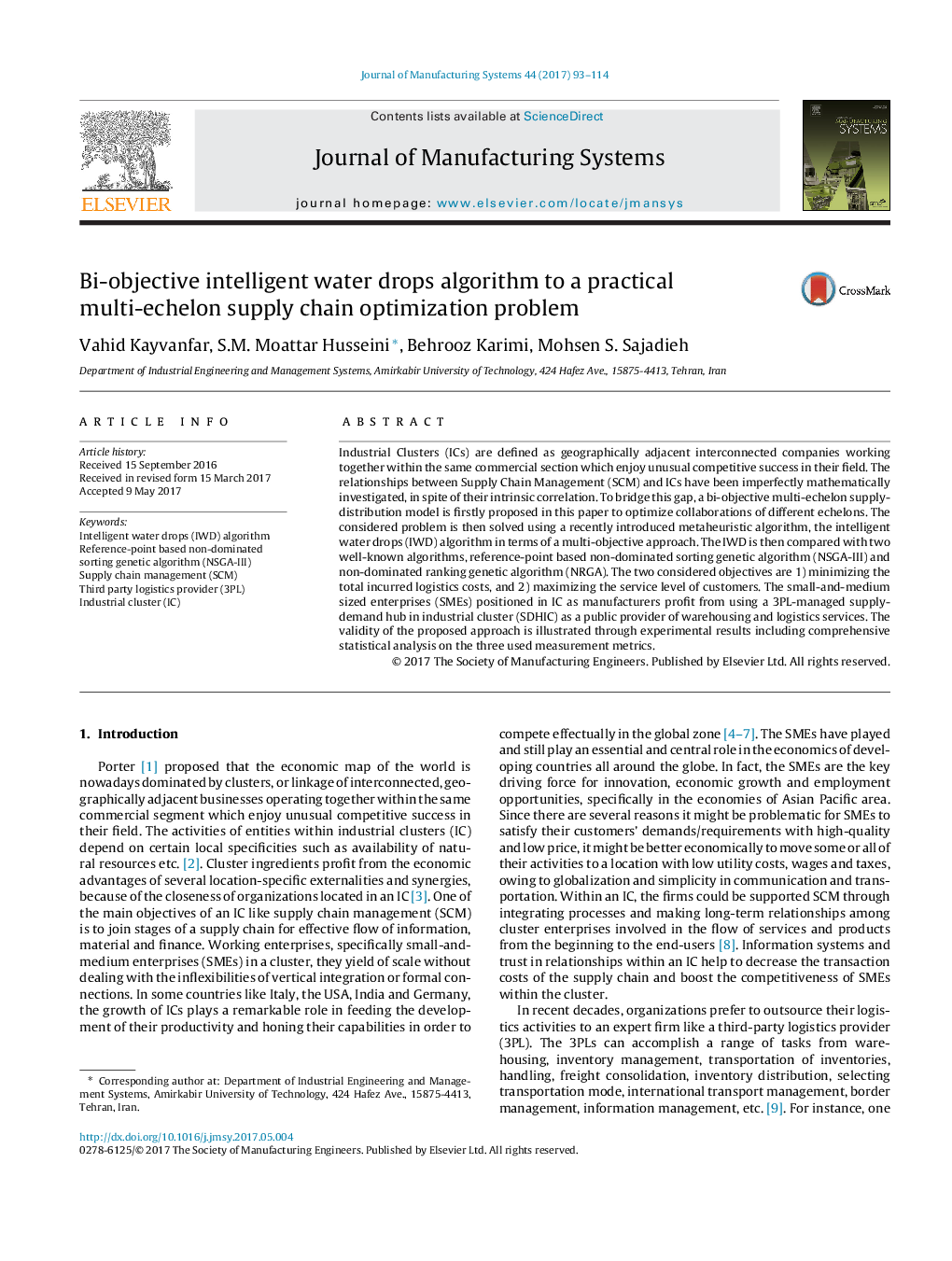| Article ID | Journal | Published Year | Pages | File Type |
|---|---|---|---|---|
| 5469481 | Journal of Manufacturing Systems | 2017 | 22 Pages |
Abstract
Industrial Clusters (ICs) are defined as geographically adjacent interconnected companies working together within the same commercial section which enjoy unusual competitive success in their field. The relationships between Supply Chain Management (SCM) and ICs have been imperfectly mathematically investigated, in spite of their intrinsic correlation. To bridge this gap, a bi-objective multi-echelon supply-distribution model is firstly proposed in this paper to optimize collaborations of different echelons. The considered problem is then solved using a recently introduced metaheuristic algorithm, the intelligent water drops (IWD) algorithm in terms of a multi-objective approach. The IWD is then compared with two well-known algorithms, reference-point based non-dominated sorting genetic algorithm (NSGA-III) and non-dominated ranking genetic algorithm (NRGA). The two considered objectives are 1) minimizing the total incurred logistics costs, and 2) maximizing the service level of customers. The small-and-medium sized enterprises (SMEs) positioned in IC as manufacturers profit from using a 3PL-managed supply-demand hub in industrial cluster (SDHIC) as a public provider of warehousing and logistics services. The validity of the proposed approach is illustrated through experimental results including comprehensive statistical analysis on the three used measurement metrics.
Keywords
Related Topics
Physical Sciences and Engineering
Engineering
Control and Systems Engineering
Authors
Vahid Kayvanfar, S.M. Moattar Husseini, Behrooz Karimi, Mohsen S. Sajadieh,
